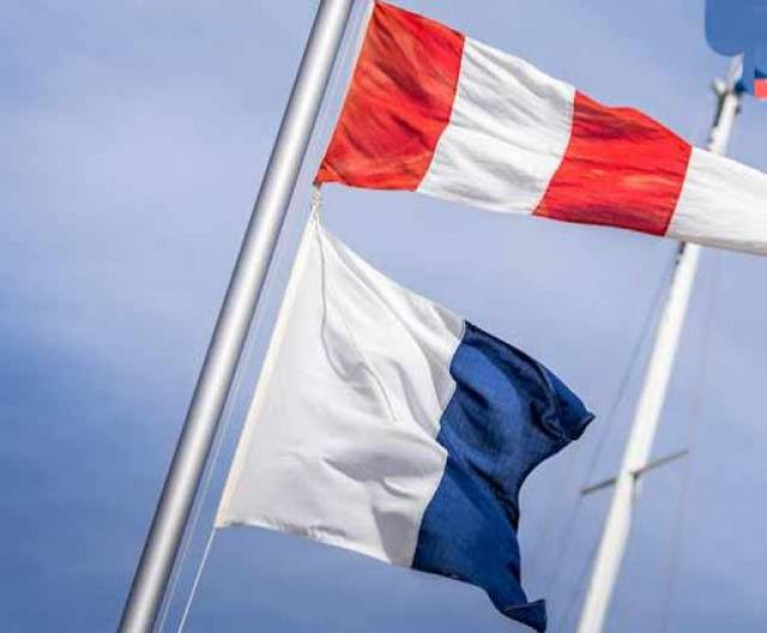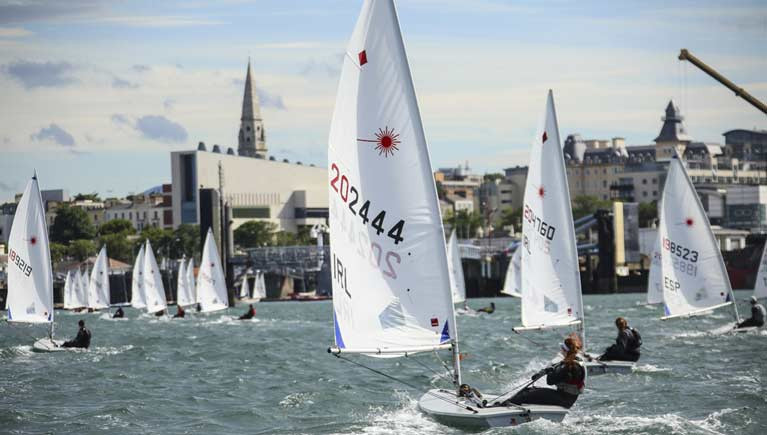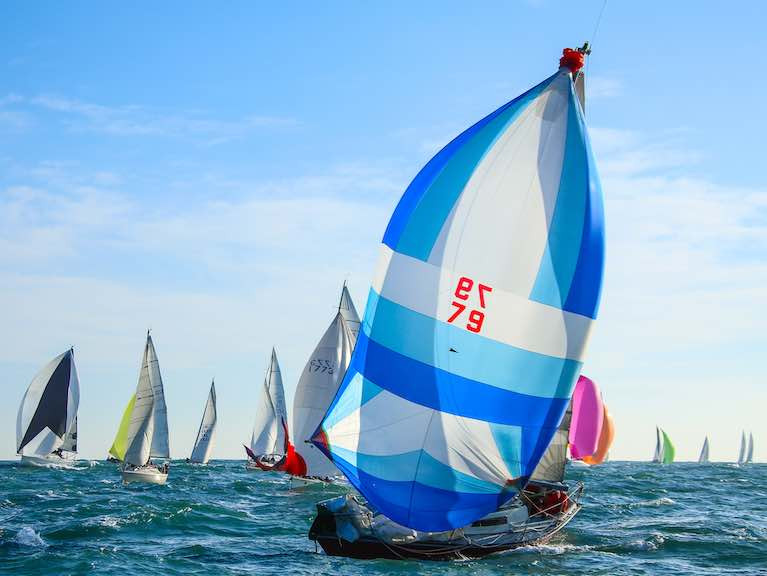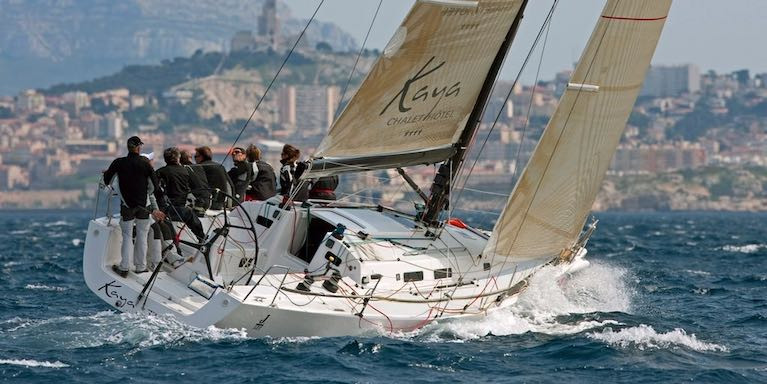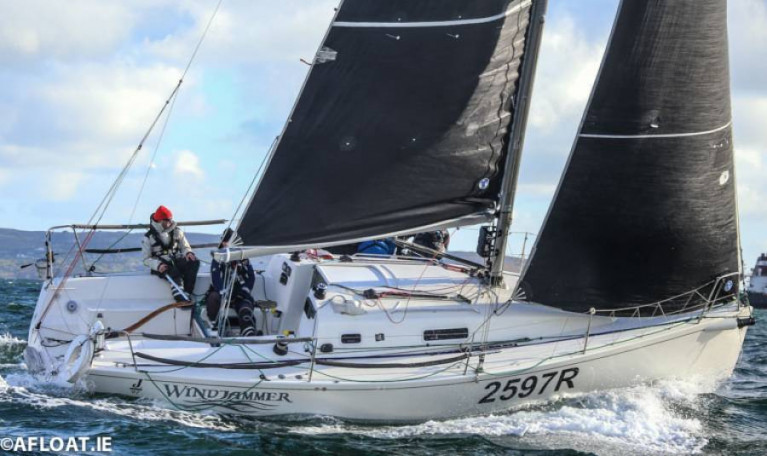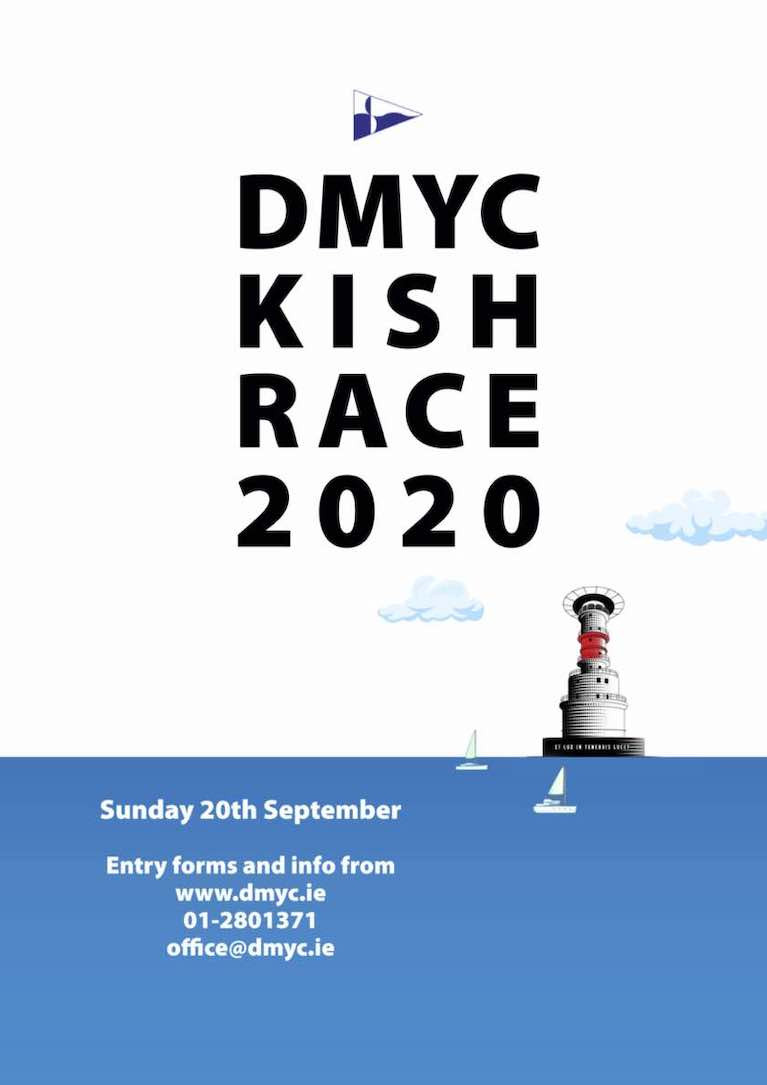Displaying items by tag: dmyc
Viking Marine DMYC Dinghy Frostbite Nears Entry Limit of 110 for Dun Laoghaire Harbour Series
Taking a glance at the list of entries table published on the DMYC website, the Race Officer is going to have his hands full with the Laser Radial /ILCA 6 fleet when racing starts this weekend in the Viking Marine Frostbite Challenge in Dun Laoghaire Harbour.
With entries currently at 110, DMYC intends to enforce the 120 limit cap on entries, at least for Series 1.
It follows on from a buoyant early entry as Afloat reported here
There are 38 Radials, 20 4.7s and 14 full rigs entered as the Laser again proves its enduring appeal during the pandemic at least.
"We will see how the participation level compares to the entries. We expect there will be some disappointed regular winter dinghy sailors, but “you snooze and you lose”, organiser Neil Colin told Afloat.
In other big turnouts, the Fireballs who host the World Championships on Lough Derg next summer have 14 boats entered and the new RS Aero class has eight.
DMYC Kish Race on Dublin Bay Forms Part of Cruisers Three Championships
Dun Laoghaire Motor Yacht Club (DMYC) has published details of the 2021 edition of its annual Kish Race on Dublin Bay next weekend.
The popular round Kish and back race will take place on Sunday, 19th September with the first gun at 10.55 a.m.
This year the Kish Race is part of the Cruiser 3 National Championships.
As regular Afloat readers will recall, last year the annual fixture had assembled a sizeable fleet including yachts from nearby Greystones Harbour in County Wicklow before having to cancel due to COVID.
Starting in the vicinity of Dun Laoghaire Harbour and racing to the Kish lighthouse and back, it is a distance of approximately 28 km.
Overall prizes will be awarded for the best performance (using an approximate TCF for Classic vessels and one-design boats).
Race organiser Ben Mulligan says that 'as this is the “last major” in the Dublin Bay summer season before the lift out or winter racing, the club is looking forward to an enthusiastic entry'.
Handicapping will be based on ECHO Standard, giving those with revised ECHOs a good chance at the prizes.
Overall prizes will be awarded for the best performance. (The Kish Race Trophy).
Barry McCartin and Conor Kinsella are the new Fireball National Championships after eight races in Dublin Bay over the weekend. Second-placed at the event, hosted by the DMYC, were Noel Butler and Stephen Oram while the Thompson brothers Daniel and Harry took third. The event was compressed into two days of racing when Friday was lost to zero breeze.
Saturday proved the best day in terms of wind with a solid North-Easterly providing decent pressure and full trapezing conditions. Principal race officer Suzanne McGarry and her team did a brilliant job in getting four solid races under the belt by mid-afternoon when the sea breeze showed signs of weakening. Two windward-leeward courses were followed by two Olympic Triangular courses with exemplary turnarounds.
McCartin/Kinsella dominated the 13 boat fleet on Saturday though they didn't have things entirely their own way with the Thompsons posting a win in race two. The pair showed great coordination and teamwork around the race track. While they squeezed the optimum VMG out of the boat upwind they were exceptionally fast offwind, especially on the triangular courses.
On the Sunday morning a different set of conditions greeted sailors who initially roasted ashore in high temperatures but zero breeze. After a postponement of an hour, however, the sea-breeze started to fill and racing got underway in lightish but very sailable conditions. Again race officer Suzanne McGarry started with windward-leeward courses and followed up with two Olympic Triangles. McCartin/Kinsella again led the fleet for the first two bullets but the third race was led by Butler/Oram while the series leaders headed ashore to fulfil a work commitment.
 Noel Butler (right) and Stephen Oram were second
Noel Butler (right) and Stephen Oram were second
 Daniel and Harry Thompson who were third overall
Daniel and Harry Thompson who were third overall
Race 8 took place without the event leaders and Butler/Oram posted another win. However, McCartin/Kinsella had done enough with five races wins and a second to discard the last two races and still win the overall by a margin of 5 points. Further back in the fleet there was great close racing all the way through. Lizzy McDowell sailing with her cousin Chara in a borrowed boat were right on the pace and came in into their own on day two. They were unfortunate to be U-flagged in the final race but they were in good company as the Thompsons and Louise McKenna/ McKenna/Hermine O'Keeffe suffered the same fate. Frank Miller/Ed Butler had a better first day than second but managed to hold onto 4th overall.
The McDowell cousins placed 5th and took the silver prize while second silver was Colm Breen with his son Cormac and third were Dave Coleman sailing with Aidan Caulfield.
 Colm Breen and son Cormac (2nd silver)
Colm Breen and son Cormac (2nd silver)
 Aidan Caulfield (3rd silver) (left) with DMYC Commodore Dermot Reidy
Aidan Caulfield (3rd silver) (left) with DMYC Commodore Dermot Reidy
There were notable new faces at the event with youngsters Daniel Hrymac crew Harvey, young Robin Nash sailing with her father Glen and veteran Ciaran Hickey returning to the fray. All in all a great event in semi-tropical conditions and all credit to the race team who managed to squeeze 8 races in to complete the series.
Next up for the Fireballers is the Ulsters in Newtownards on August 21/22 and on September 18/19 the fleet head to Dromineer to sample the conditions at Lough Derg YC, the venue of the Fireball World Championships next year.
John Masterson's Curraglas of the National Yacht Club is 2021 Shipman Irish National Championship winner after a four-race series at Dun Laoghaire Harbour this weekend.
RStGYC's Viking (Fergus Mason and Colm Duggan) was second overall. Third was clubmate Alain Deladiennee's in Poppy.
Masterson won by a one-point margin in the eight boat fleet after four races sailed at the DMYC hosted championships.
Results are here
DMYC Dinghy Christmas Cracker Event is Abandoned as Covid Numbers Increase
A DMYC Committee meeting held this weekend has decided to abandon plans for its inaugural Christmas Dinghy Challenge at Dun Laoghaire Harbour.
As Afloat previously reported, the event was scheduled in anticipation of the lifting of Level 3 restrictions this weekend but the club's Neil Colin told Afloat, "A change in direction of the tide (Pandemic Numbers, coupled with the NPHET commentary, and anticipated relaxation that has not occurred) have led us to abandon the Christmas Challenge"
The DMYC is celebrating 50 years of winter sailing organisation this year.
The club has removed its online registration system and any entry fees will be refunded, according to Colin.
"These are sad times but we look forward to fair winds in 2021, and want to ensure everyone remains as safe as possible", he added
DMYC Launch 'Christmas Cracker' Dun Laoghaire Harbour Dinghy Event
The Dun Laoghaire Motor Yacht Club (DMYC) has its “Christmas Cracker” dinghy series, in anticipation of the amended Level 3 Restrictions due to take effect on 18th December, to give all East Coast dinghy sailors a chance to “pull in their sheets and wear rubber” over the festive season, in anticipation that many sailors will be staying local.
The DMYC is celebrating 50 years of winter sailing organisation this year.
The event will take place on Sundays 20th, 27th and New Year’s Day 1st January, commencing @ 12.00 in the main harbour.
The event is intended for double-handed and solo sailors, with a PY handicap of 1400 or lower.
A Notice of Event and registration system is now live here. Download an event poster below.
The event will be capped at the first 100 entrants. The DMYC's Neil Colin says, "If we cannot go sailing due to the pandemic, the nominal entrance charge will be refunded".
This is an open event, visitors on the days are welcome to use the harbour’s public slipways as well as the regular waterfront slipways, to minimise congregation and maintain safe distancing.
There will be no social “after sail” gatherings, and club changing rooms are expected to be closed. Consequently, a “sail and dash” approach is needed, and even this season’s fashion accessory, the 'Dry Robe' will come in handy.
DMYC Kish Race on Dublin Bay is Postponed Due to COVID
The DMYC Kish Race on Dublin Bay that has attracted 51 entries for this Sunday morning's start off Dun Laoghaire Harbour has been postponed due to the Level 3 COVID restrictions coming into effect at midnight.
The annual fixture has assembled a sizeable fleet including yachts from nearby Greystones Harbour in County Wicklow.
DMYC race organisers hope to reschedule the race and plan to advise competitors early next week.
Greystones Harbour Boats to Boost DMYC Kish Race Entry on Sunday
Up to six County Wicklow boats will travel from Greystones Harbour early on Sunday morning to compete in the DMYC Kish Race swelling the already buoyant 40-boat entry for the annual Dublin Bay Race.
The Greystones visitors include the latest entry Frank Whelan's new J122 Grand Prix, Kaya, that will make its Irish race debut at the Dun Laoghaire Harbour event.
Whelan's new yacht is a sister ship to the well-known Royal St. George J122 Aurelia, a top Irish offshore performer.
Kaya is a replacement for Whelan's all beating Eleuthera, a Grand Soleil 44, that has been sold to new owners in Cascais, Portugal.
Kaya arrived in Ireland just a fortnight ago from France, so she is still in shakedown mode, according to her skipper for the Kish Lighthouse Race, Paddy Barnwell.
A new entry is Paul Barrington's well-known J109 "Jalapeno" from the National Yacht Club that will also be a serious contender for line and class honours in this year's race.
As Afloat previously reported, the race takes place from the DBSC Hut area at the back of the West Pier, starting at 10.30 am on Sunday.
The race has already attracted an entry of over 40 boats and promises to offer some impressive "head to heads" amongst the various competitors. The recent access of George Miller in "The Den" is no doubt welcomed by his Shipman classmates.
In the Ruffian 23s, David Meek and NYC Commodore Martin McCarthy are also racing out to the lighthouse.
Race Officer (RO) Larry Power is hoping for fair winds for the race. Currently forecast is for 10 to 16 knots from the East with the possibility of some sunshine.
The RO has the option to set an Inflatable Mark that will not be quite as far as the Kish if the feeling is that the wind is not sufficient.
Due to demand, The DMYC have extended the Entry Cut Off to 1900hrs on Saturday 19th. You can enter here.
Sailing Instructions are downloadable below.
The current entry is below:
CURRENT KISH RACE ENTRY LIST 2020


Dublin Bay DMYC Kish Race Hots Up With 35 Entries & Counting for Sunday's Start
With entries close to 35 boats, the annual DMYC Kish Race has been made all the more interesting with some of top ISORA boats now entered for this Sunday's Race on Dublin Bay.
ISORA coastal regulars such as the Royal Irish's new Prima Forte, a Beneteau First 40, plus the Royal St. George's J97 Windjammer, the National Yacht Club's Sunfast 3600 and the Dun Laoghaire Marina based First 310, More Mischief are all now entered.
The organisers have acceded to a request from Cruiser 3 Class Captain, Kevin Byrne, that the results from the race be used for part of the Cruiser 3 Annual Championships which also takes place this week.
 The Grzegorz Kalinecki skippered First 310, More Mischief
The Grzegorz Kalinecki skippered First 310, More Mischief
The Cruiser 3 Class will use a combination of their Saturday DBSC results and the Kish Race results to decide the 2020 Champion.
The Committee is also very grateful to Larry Power (NYC) who kindly agreed to be PRO assisted by regular Club Stalwarts, Brian Mulkeen and Rodney Beste. The Race begins at 1030 hrs from the normal DBSC "HUT" starting area, and the Finish will be between the East and West Pier Lighthouses (for any spectators with an Interest!).
In a change from last year's format, the Committee has elected to have three separate starts, One for Cruisers 0/1; another for Cruisers 2/3 and Shipmans and finally a start for Cruisers 5 and Ruffians.
The club has also elected to award Prizes not only to the Overall Winner ( the magnificent "Kish Trophy") but also to the winners of each Cruiser Class, Shipmans and Ruffians.
 John O'Gorman's Sunfast 3600 'Hot Cookie' from the National Yacht Club
John O'Gorman's Sunfast 3600 'Hot Cookie' from the National Yacht Club
John O'Gorman's "Hot Cookie" will no doubt cut a dash in Cruiser 0/1 along with former DMYC Commodore Leslie Parnell in "Black Velvet" along with "Prima Luce".
No doubt the Ruffians and Shipmans will have battle "Royale" given the List of keen Helms including Gerry Glynn, Brendan Duffy, Michael Cutliffe and many others.
The regular inhabitants of the 55-year-old Kish Lighthouse (Cormorants and Herring Gulls in the main) are in for some disturbance this Sunday!
The DMYC have confirmed that they are extending the Entry Deadline up to 7 pm on Saturday 19th of September. You can enter here
The Kish Race 2020 entrants so far are as follows:


DMYC Prepares for Annual Kish Race on September 20
Dun Laoghaire Motor Yacht Club (DMYC) has published details of the 2020 edition of its annual Kish Race on Dublin Bay later this month.
The round Kish and back race will take place on Sunday 20th with the first gun at 10.25 a.m.
Starting in the vicinity of Dun Laoghaire Harbour and racing to the Kish lighthouse and back, it is a distance of approximately 28 km.
There will be three starts separated by five-minute Intervals.
- 1st Start Cruiser 0 and 1
- 2nd Start Cruiser 2
- 3rd Start Cruiser 3, 4,5. Shipman and Ruffians
Race organiser Ben Mulligan says that 'as this is the “last major” in the Dublin Bay summer season before the lift out or winter racing, the club is looking forward to an enthusiastic entry'.
Handicapping will be based on ECHO Standard, giving those with revised ECHOs a good chance at the prizes.
Results for the race will be calculated using ECHO standard TCF handicaps, or equivalent. Overall prizes will be awarded for the best performance. (The Kish Race Trophy)
In addition, there will be a Prize awarded for the first Shipman and the first Ruffian and the first in each cruiser class.
Unfortunately, this year organisers cannot offer the hospitality of the DMYC for the prizegiving but prizes will be sent to the winners.
The entry fee is €25


























